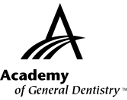|
Exercise No. 351
Subject Code: 257
Caries Detection and Prevention
The 15 questions for this exercise are based on the article, Microtensile bond strength of etch-and-rinse and self-etch adhesives to artificially created carious dentin, on pages 56-61. This exercise was developed by Gustav Gates, DDS, MAGD, in association with the General Dentistry Self-Instruction committee.
|
Reading the article and successfully completing this exercise will enable you to:
- understand the differences between sound dentin, caries-affected dentin (CAD) and caries-infected dentin (CID);
- understand how different adhesive systems bond to different types of dentin; and
- compare the bond strengths of 2 different adhesive systems to CAD and CID.
|

